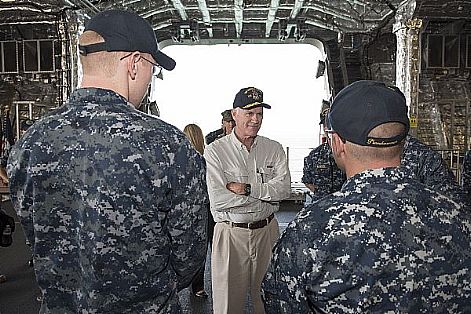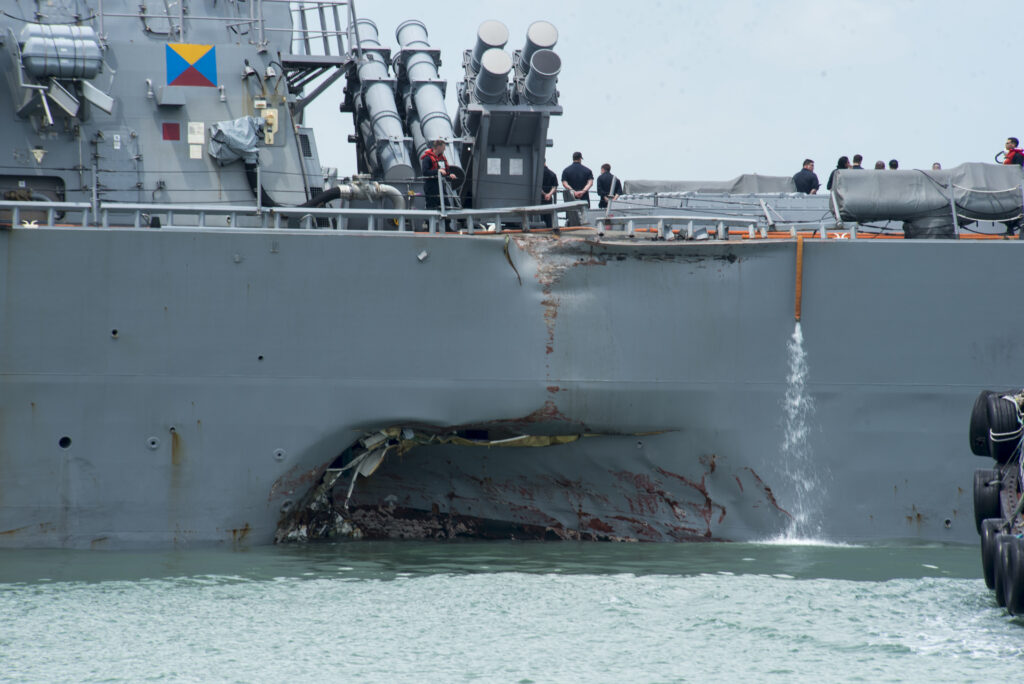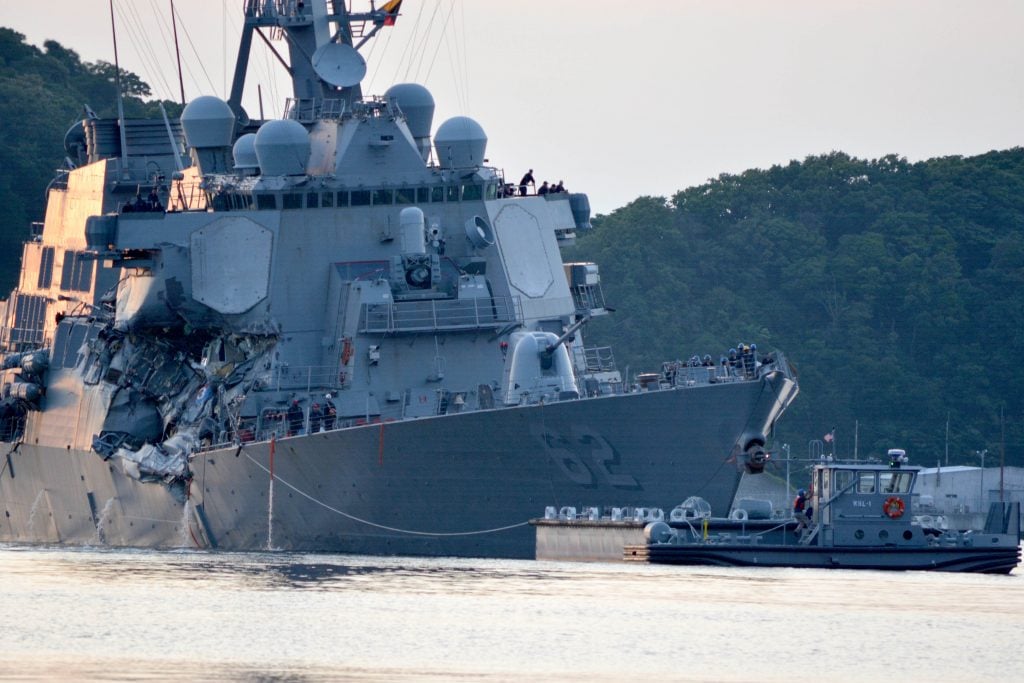Overburdened Navy Must Just Say ‘No’: Spencer
Posted on

Navy Secretary Richard Spencer talks to sailors aboard the Littoral Combat Ship USS Giffords
PENTAGON: How will the new Navy Secretary get people to understand the fleet is being worked too hard? “Because we’ll start every conversation with 17 dead sailors,” Richard Spencer told reporters this morning in his first media roundtable as SecNav.
The 10 deaths aboard the USS McCain last month and the seven aboard the USS Fitzgerald in June have many causes, which Spencer addressed in a Senate hearing yesterday. But the fundamental problem is a collision between a shrinking fleet, growing operational demands, and erratic funding for training and maintenance.
“When I said yesterday that the Navy has a problem and we’re going to fix it, (that means) we’re going to have to come to…some sort of balance between supply and demand,” said Spencer. “The COCOMs (Combatant Commanders) are going to have to understand it, and the Hill is going to have to understand it.”
The Navy has been operating according to a “false math… that we couldn’t afford,” the secretary said. “We have been punching way above our weight and possibly robbing Peter to pay Paul to get our missions done, and now the bills are coming home.”

The USS McCain heads for Shanghai after a collision that killed 10 sailors.
Longstanding Navy culture will have to change, Spencer said, to make it acceptable to say “no, we can’t” when an already overtasked or undertrained unit is given a new mission. “You truly have an organization, as you all well know, that is biased to action and the word ‘no’ is just not in the lexicon,” Spencer said. “We have to find a balance… because the pure blind answer, yes, without assessing the risk is non sustainable.”
The accidents only make the problem worse by taking two ships out of circulation. The Fitzgerald will be in repairs for over a year. The McCain’s assessment is still ongoing but the damage looks to be less extensive. Repairing the two destroyers will cost an estimated $600 million, money which Spencer noted is not in the Navy budget. The service will have to ask Congress for supplemental funds, and “it’s going to have to be sooner rather than later,” Spencer said, almost certainly before the 2019 budget request in the spring.
In the medium term, Defense Secretary Jim Mattis has prioritized plus-ups to readiness funding for all four services – in many cases deferring modernization. The goal is to catch up on the years of cancelled training and deferred maintenance that resulted from the 2011 Budget Control Act capping defense spending even as the wars in Afghanistan and Iraq dragged on and new threats arose from China and Russia.
The long-term solution is a larger Navy. The fleet has shrunk from its 1987 high of 594 ships to 278 today, even while the number of ships deployed outside US home waters at any given time has stayed roughly constant at about 100. That means ships and sailors must deploy more often and for longer, putting more strain on humans and machines alike with less time for recovery and repair. That’s a particularly acute problem in the Japan-based 7th Fleet to which both McCain and Fitzgerald belonged. Unless the demand for ships drops – which is unlikely – then the supply of ships must rise.
As a candidate, Donald Trump called for a 350-ship Navy. The official Force Structure Assessment from the Chief of Naval Operations, Adm. John Richardson, calls for 355. But warships take years to build, and US shipyards will take at least 18 years to build enough ships – assuming they can get the money. Unfortunately, in the near term, much-needed repairs and readiness funding competes directly with shipbuilding. It’s a zero-sum game as long as the Budget Control Act caps limit the total Navy topline.

The damaged destroyer USS Fitzgerald pulls into Yokosuka, Japan after colliding with a commercial ship. Seven sailors died.
“I am painfully aware of (the dilemma), how do we support a 355-ship goal and also dig ourselves out on readiness?” Spencer said.
“We are going to have to have some topline relief to move the 355-ship goal forward,” he said. That means amending or eliminating the Budget Control Act. While it’s worth seeking efficiencies within the Navy Department, he said, including potentially returning retired Perry class frigates to service, that won’t save enough money to buy a 355-ship fleet. “There are things that we can do in a more improved manner, I think, when it comes to overall acquisition and resource applicability, but it certainly isn’t going to fund the gap,” Spencer said. “At the end of the day we need to have a straight line of sight to the resources.”
Is it even worth holding up 355 as a target when it’ll take decades to achieve, at best? Perhaps there might be some more modest, achievable number to target instead?
“I don’t think there’s a more reasonable (number),” Spencer said. “350-355 is a goal we have” that helps anchor the discussion: “If we don’t put a stick in the ground, it can be moved around even easier. So I think we should put a stick out there.”
Subscribe to our newsletter
Promotions, new products and sales. Directly to your inbox.
